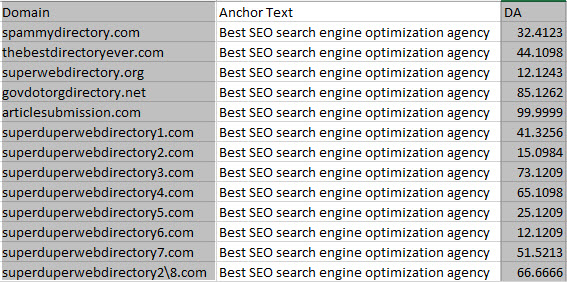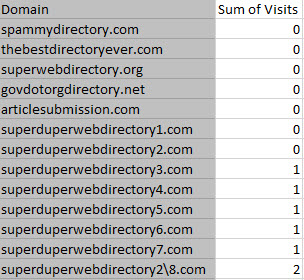by Jay Ratkowski
For any search agency, a new reality of the job includes cleaning up messes created by others. At Perficient, we’ve had several clients hit with manual actions from Google, largely due to poor link building tactics by previous agencies. Anyone who has been through this kind of cleanup process before can appreciate the pain-staking effort required to get to a successful reconsideration request. One major roadblock is, the kinds of data points that could be used to build efficiency cannot always be trusted.
Let’s look at a real example…
One client had several links from this domain: goarticles.com
I’ll save you the agony of visiting the site, all you need is a screen shot of their header.

Even someone that does not work in SEO should know that this is a poor quality site, and you want nothing to do with them linking to you. In the case of our client, Google even used a link from this site as an example of unnatural linking.
You’d think sites like these would naturally die off, but that big “Submit Articles” button is just too tempting for the lazy link builders, so it’s littered with duplicate content and exact match anchor text.
Analyzing a site like this is easy in a vacuum. But what if it’s hidden amongst hundreds of thousands of links?
The easy solution would be to use the numerous 3rd party tools out there (and their associated APIs) to pull massive amounts of data and use Excel to filter out the bad stuff. But what happens when we do this is concerning…
Examples of misleading link metrics
Open Site Explorer
OSE is a great tool, but is not without its flaws. In this case, the flaw is more like a gaping wound.

I get it, our example site has a lot of links, a lot of new links, and a lot of links from other sites with a high domain authority. But obviously this site is doing things that are outside the scope of OSE’s metrics. Because a DA of 83 (along with all the other stats) indicates that this is indeed a site you’d want linking to you. The reality is the exact opposite.
Majestic SEO

Here we have pretty high scores for Trust & Citation Flow. Clearly this is not just some site that exists only to host spammy content. They’ve done a lot of work building visibility online. If you were trying to grab this data for all links via API and filter out the bad ones – you’d once again miss this link.
ahrefs

Once again, very high scores! This is an awesome site, how do I get them linking to my site? Oh wait, I forgot, it’s a terrible link. See how easy it is to get confused?
How do I find these links?
There are a ton of great guides to help you identify bad links, so I’m likely not going to blow your mind if you’ve read a few of them before. But here are a couple tips to help avoid having these links fly under the radar.
Anchor Text
OSE, Majestic and others will give you anchor text for your links. If you get all this data in Excel and do some quick sorting, you’ll identify a lot of repetitive exact match trends.

Real humans rarely use high value keywords as anchor text, so chances are these links were acquired unnaturally.
Domain Names

Is your link coming from a site with “directory” or “article” in the domain? Yep, that’s probably spam.
Link Quantity

Sometimes people do silly things like add you to their blogroll without realizing it’s a problem. But lots of times, this stuff is intentional. If one domain is linking to you over and over and over, you’ve gotta ask yourself why.
Referral Traffic

If no human ever clicks a link to visit your site, why does that link exist? Probably only to game the system. Definitely flag these links.
Summary
Certainly, this is not meant to say any of the tools mentioned are bad or useless. They’re quite the opposite. But, far too often we push for efficiency and can miss some very obvious problems along the way. Please keep this in mind as you work to clean up your link profiles (or even as you are out building link).
If you have any other tips for sifting through endless links to identify the bad ones – please comment and share!
